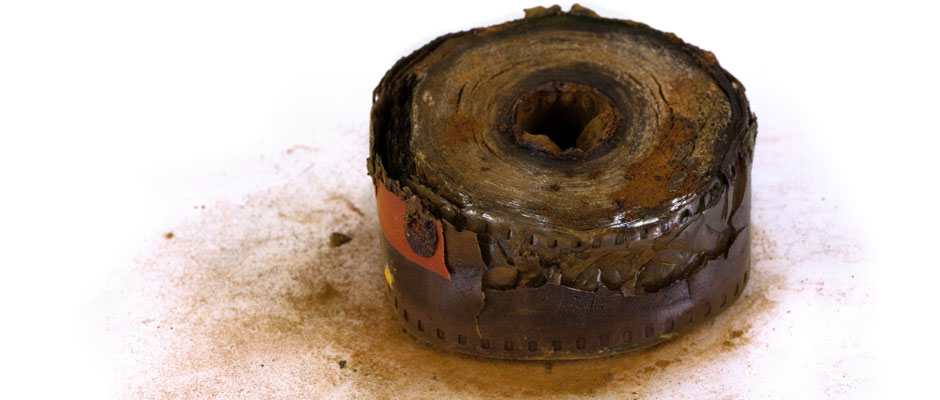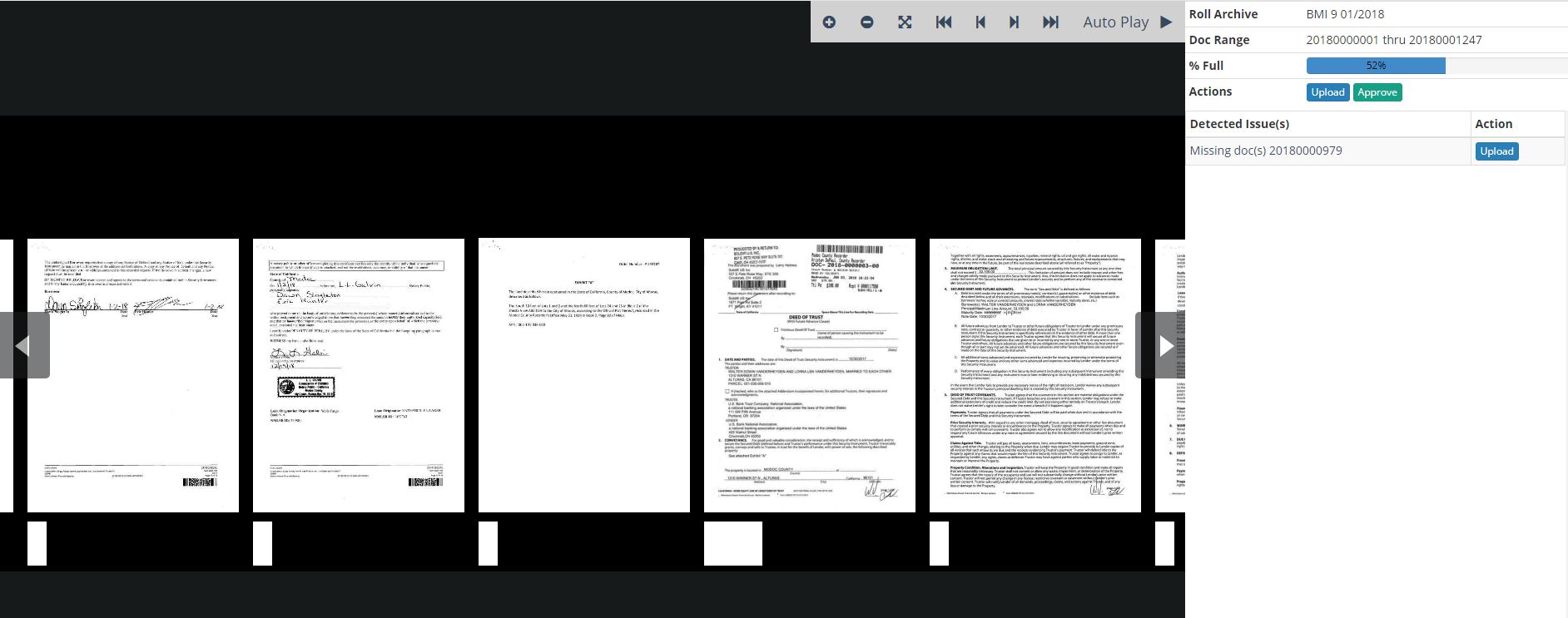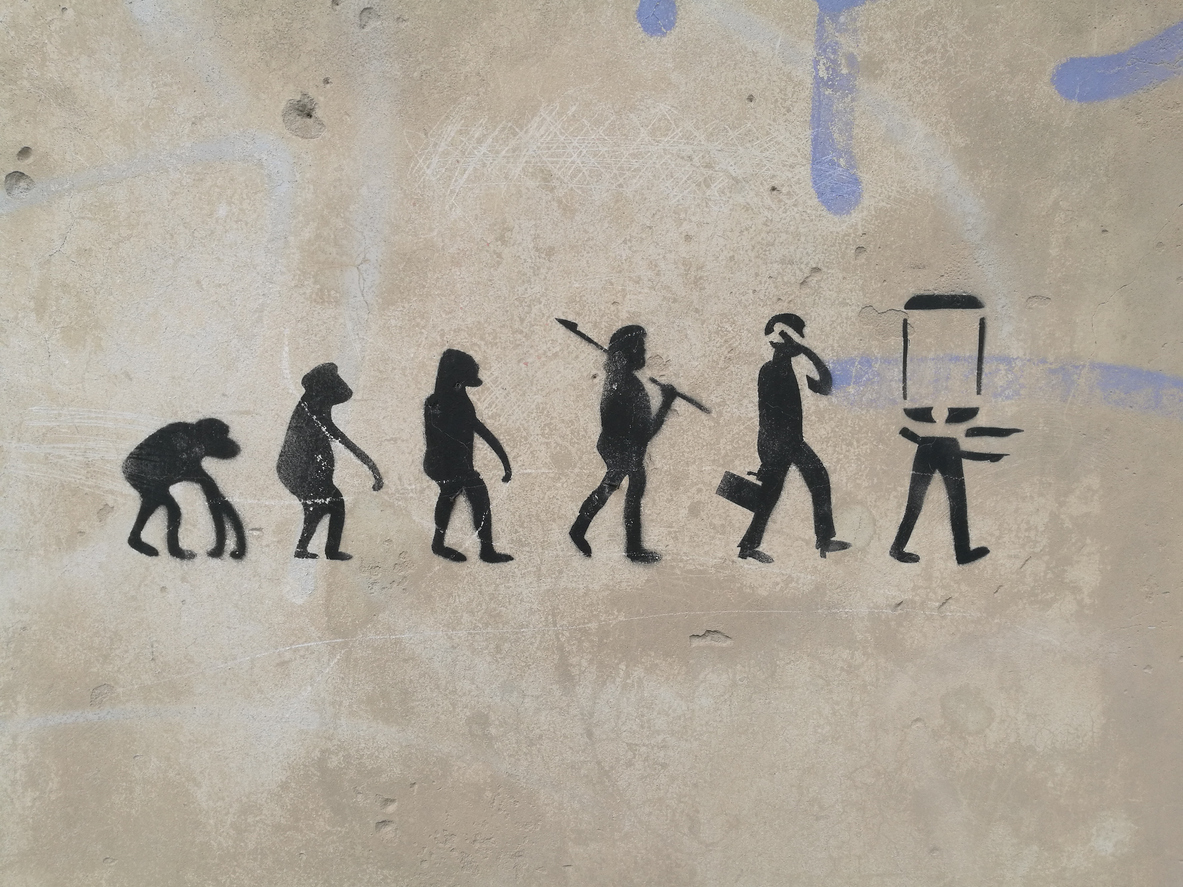Microfilm was invented over 180 years ago and is considered by some to be the archival storage medium of choice to preserve documents.
But in the 21st century, does microfilm still have a role to play? With digital technologies changing the landscape of how we create, access, and store records, what’s the point of microfilm?
In our article we’ll cover a (brief) history of microfilm, where it’s used today, some benefits of choosing microfilm for records preservation, and the potential future of microfilm.
As a minor note, we mostly use the term “microfilm” although we may sprinkle in microfiche, too. Microfilm and microfiche are both a part of the microform family. For more info about types of film, see our page “What Kind Of Film Do I Have?”.
Check out the video version of the History of Microfilm!
History Of Microfilm
Microfilm was invented in 1839 by a fellow named John Dancer. Technically speaking, he created microphotographs, not necessarily the “microfilm roll” we know and love today. The French optician Rene Dagron then expanded upon Dancer’s invention and created more commercially practical applications for microfilm. During the Franco-Prussian War (1870-71), Dagron used carrier pigeons to send messages on microfilm.
In the 1920s, a New York City banker created the first commercially viable use for microfilm to capture permanent copies of bank records, and then in the 1930s a 35mm microfilm camera paved the way for newspaper preservation, still one of the primary areas that microfilm is utilized.
World War II brought a jolt to micrographics as it was used for espionage activities as well as regular mail going overseas. In addition, with countries being occupied and concerned about historic records getting destroyed, microfilming was ramped up to ensure that history did not get wiped away.
From the 1950s through the 1970s, microfilm was adapted as an “active information system” rather than purely a storage medium. Especially in libraries, microfilm blossomed as a primary method to access information because hard copy newsprint was bulky, prone to deterioration, and there was just too much of it to keep organized and stored usefully.
The 1980s and 1990s continued with microfilm creation as a primary mechanism for record preservation, and also saw the computer start to be utilized in microfilming. Computer output microfilm (COM) was used for items such as insurance documents and catalogs.
When the 21st century started, digitization was on the rise and continues today. Many collections that were microfilmed decades ago are now being scanned into electronic formats for more rapid access and availability. Some organizations still use and require microfilm, so it’s not going away – even with all the digital technology available, microfilm is an incredible and stable method of preserving records over the long term.
(Information for this section gathered from the University of California Southern Regional Library Facility website)
What Is Microfilming?
Microfilming is the process of turning a document into microfilm. Microfilm most often refers to taking physical records (such as newspapers) and converting them into microfilm. However, there is a process by which you can convert digital images into microfilm: this is called archive writing.
For the bulk of this section, we’ll be using the traditional interpretation of microfilming (hard copy into microfilm).
How is microfilm created?
To create microfilm, you need what’s called the “original material” as the starting point. The original material can be anything you want preserved on microfilm: newsprint, official record books, medical records, criminal reports, etc.
Once you’ve identified the material you want preserved, a photograph is taken of the material (using a specific camera) and the image is captured on a roll of microfilm. After photographing the material, the microfilm is processed in chemical tanks and then cut into individual rolls. Like the days before digital photography, if you expose the microfilm to light before it’s processed, the film will likely be ruined and you won’t be able to see any images that were captured.
After creating rolls, the microfilm is packaged in individual containers and labelled for later use. The labelling can be as simple as “Roll 1, Roll 2, Roll 3 …” or contain a bunch of information such as names, dates, addresses, projects, and so on.
How long does microfilm last?
If stored properly, microfilm has a 500-year lifespan. This makes it great for long-term preservation and minimal storage.
You might be thinking, “if I have a bunch of microfilm rolls, why wouldn’t I just get them scanned and store them electronically? That lasts forever.” Two responses might help here.
First, regarding digital images lasting forever, it’s a maybe. Just because something is in digital form doesn’t mean that it’ll be around forever. Like microfilm, digital images and data have to be preserved: if you have your files on a USB drive and the drive dies, those images are gone forever. Or if you delete a file by mistake, gone.
Second, microfilm is made to be eye-readable. This means that you don’t need a special machine or program to look at the content. You can actually just grab a magnifying glass or loupe, pop open the roll of film, and off you go. If you have PDF files stored on a USB drive, but no computer to plug into, you can’t read those files.
Though you can keep electronic files forever, in theory, you still have to keep your storage application and computer hardware up to date to make sure the digital files are protected and don’t disappear. Even if you’re using a third party hosting service, are you sure they’re going to be around for a long time? What happens if they go out of business? What happens to your files?
Microfilm is a physical method of ensuring your content and data last for centuries to come, without the need for special machines or applications to view the content.
How is microfilm supposed to be stored?
If you’re trying to follow the absolute best way to preserve your roll film and microfiche in long-term storage, then you should read our article “How To Store Microfilm” for a detailed discussion. The article lists out Kodak’s “10 Ways to Maintain Your Microfilm Records,” which includes the temperature and humidity levels your film should be stored at, how to handle your film, and how to catch any deterioration effects. Kodak knows microfilm, so following their guidance can help you preserve your film records for years to come.
But assuming you don’t have temperature- and humidity-controlled environments, or even separate storage space to keep your microfilm, you’ll want to keep your film in a cool environment (in other words, not a hot garage) and away from light, chemicals, and moisture. That’s doing pretty good for starters.

Microfilm that wasn’t stored properly. Don’t let this happen to you!
Image source
Archive Writing
Another method of creating microfilm is through archive writing, which is taking already-digital images and turning them into microfilm. This sounds counterintuitive for some: why would you want to make microfilm out of something that’s already in an electronic format?
In many cases, organizations that create microfilm from their records are required through regulation or statute to keep an eye-readable copy of their data. If they’ve already scanned the hard copy files, the most cost-effective and space-effective way to maintain physical copies is by creating a microfilm backup.
An example: a county recorder has 500 boxes of files and 300 books of official records. They want the material scanned into digital so they can import it to their records management application, but their state requires an eye-readable copy of the data be kept, as well. Instead of digitizing the records and keeping the hard copy (500 boxes and 300 books is a lot of material and takes up plenty of space), the county decides to shred their paper copies and instead create microfilm as the hard copy backup. 500 boxes and 300 books would be about 550 or so rolls of microfilm, which would fit in about 6 boxes. That’s drastically easier to store!
Where Is Microfilm Still In Use?
Some may think it’s odd that microfilm is still around decades into the 21st century; we know where you’re coming from! A content medium created in the first half of the 1800s is still used for records preservation?? The answer isn’t just “yes” – it’s a big, fat, emphatic “yes!”
Though microfilm may not be as prevalent in the private sector, public entities are awash in microfiche and microfilm – building departments, sheriff’s offices, county recorders, superior courts, and federal departments are some of the places most likely to have microfilm. And we can’t forget the libraries, which is what most people think of when they hear “microfilm” and think back to the days of using the big reader/printers to research their high school term paper.
Why is microfilm still being used?
To be redundant, microfilm is a great long-term storage method for records preservation. If stored properly, it’s hardier than paper and is eye-readable, not requiring a computer or software program to read the data. Also, it takes up less space than paper records (if you’re required to have an eye-readable backup copy).
Remember, if you’re only required to keep a copy of a record for a few years and it doesn’t have to be eye-readable, then you’ll probably either keep the paper files then dispose of them when the time comes, or you’ll scan them into digital. Eye-readable hard copies aren’t required for all organizations!
Benefits Of Using Microfilm For Records Preservation
Why should microfilm be used for records preservation?
Microfilm is built for long-term preservation and doesn’t require additional resources (such as hardware, computers, software apps, and so on) to be able to read it. You might need a magnifying glass or a loupe to read the material, but some documents are even legible to the naked eye without magnification.
In addition to the longevity of microfilm (500 years if stored properly), it takes up very little physical space relative to hard copy records, so it’s economical in that sense, too.
How secure is using microfilm to preserve records?
In the “preservation” sense of the word, microfilm is extremely secure. As long as it’s stored and handled properly, it’ll last centuries.
If we’re talking security in the pure sense of the word, that’s up to you. Once you have your film, you’ll need to decide how to protect it from damage or loss. For example, if you work at a library and want to create microfilm of newsprint collections, you’re probably going to allow the public to access the film and use readers/printers to view the material. Do you want the public to have access to the only copy of your film? Probably not, so you’ll need to make a duplicate copy while you store the original somewhere safe. It’s been known to happen that film degrades over time, the public uses it improperly and it gets damaged, or someone just walks off with a roll.
Who should consider using microfilm for records preservation?
If you’re part of an organization that requires eye-readable copies of records, even if you already have digital versions, then microfilm could be right up your alley. You may not keep it in your office and instead store it off-site, but it takes up much less space than paper records and will cost you much less in storage expenses.
Others that may want to look at microfilm as a preservation method are archival institutions, such as libraries, historical societies, and the like, so that they don’t have to keep the original hard copy records of their local histories. Even if the records are or will be digitized, technology can fail and digital records can be lost, so having an archival backup protects your history.
Future Of Microfilm
How is technology impacting the future use of microfilm?
Microfilm as an end result is old technology – not much has changed in 100 years. What has changed is the method in which it can be created. Mentioned earlier, there are two primary methods of creating roll film: photographing the original material, and archive writing.
Photographing hard copy records isn’t a big technological jump, but the archive writing part (creating microfilm from digital records) has made some progress in the past few years, specifically when it comes to our own Microfilm Digital Archive application.
In the recent past, clients would send us CDs and DVDs (remember those?) with their scanned records on them, and we’d load turn those images into microfilm using an archive writing machine. It was simple, but oftentimes our client would let us know that they sent the wrong images, or they missed an image and needed a roll of microfilm re-processed, and so on. When you’re using CDs/DVDs and pumping out microfilm based on what your client sends you, there’s not much you can do other than redo the film. That is, until we introduced our Microfilm Digital Archive application, or “MDA.”
With MDA, we provide our clients with a secure, hosted application where they can load their images, then review the images for accuracy and completeness. MDA even alerts our client when a document is missing. Once our client approves the “roll,” they click a button and we create the hard copy microfilm for them.
At the end of the process, our clients have a hard copy microfilm roll and an unchangeable, digital preservation hosted copy in case they ever need another roll created, and just as a backup disaster recovery copy. It’s a win-win!

Screenshot from our Microfilm Digital Archive application.
Next Steps
Reach out to us today! Click the “Get Your Quote” button below, fill out the form, and we’ll quickly reply to you to discuss your project.
Further Reading
Interested in learning more about microfilm? Here are three recommended articles to expand your knowledge of the microfilm world:
“How To Store Microfilm” gives you the information you need to properly store your microfilm records. Some key guidelines include temperature and humidity, light exposure, and general cleanliness of the storage area.
“7 Things You Need To Know About Microfilm” is a good addendum to the article you just finished – it has a few more bits of info that will be useful to you as you continue your research.
“How Much Does Microfilm Scanning Cost?” describes the 9 factors that’ll influence your scanning project price. If you have microfilm but want to get it digitized, this should give you a ballpark idea of what your project might cost.

